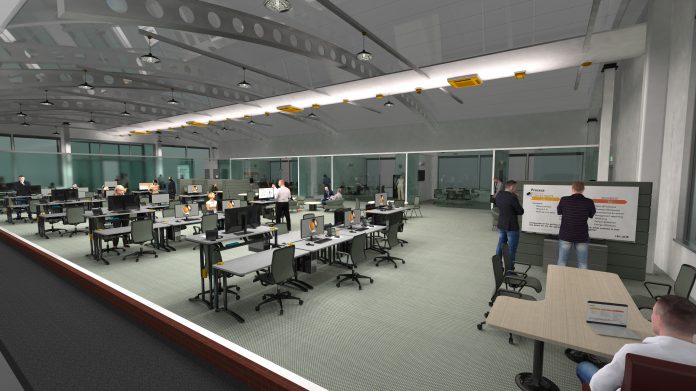Paul Wells from IM&M tells us why it is so important to have a great working environment
If the pandemic has taught us anything, it is that where and how we work is critical to our ability to perform well. Working from home has proved to be achievable and some people will not want to go back to the way we have worked in the past. For me and a lot of other people, working from home is a distraction and even though I have a nice desk and chair, it’s not the same.
Why do people turn a house into a home? And why is this important when we start returning to work?
A recent(1) YouGov survey suggested that 91% of those surveyed now wanted the flexibility to work from home some of the time.
In April 2020, the(2) Office of National Statistics (ONS) reported that 46.6% of people in employment did some work from home, mainly due to the pandemic. Going forward, making the working environment more conducive to people’s requirements will become a really important strategy for every organisation.
Placemaking
We have been saying for many years that employees will want to work with organisations that offer them more than just a job, and organisations such as British Land are also seeing Placemaking as an important element in attracting organisations into their properties.
If we look at Placemaking, most people appear to agree that it is about “making environments where people want to live, work and play.” I see Placemaking along these lines but with a slight twist, I think the definition of Placemaking should also look at how changes that have potentially no current financial gain can also derive business benefits, which will far outweigh the costs in the longer term. We do this naturally in our houses, turning them into homes.
The working environment & health
Before the pandemic, research suggested that(3) 64% of people thought that their working environment had a negative impact on their health. People will return to work, but how we perceive working will have changed. We have proven that most people have learned to cope with and adapt to working from home, but many like me would like the flexibility to decide when, how and more importantly, what environment they will be going into. We need to provide the same comfort factor in our offices as we do in our homes so that people want to come into the office environment.
To do this you need to look at what you have, how it is structured and how it can be changed to better suit people’s needs; a good example I recently heard was about an organisation that had adapted its workspace to have more meeting rooms. The problem they found was that people were congregating outside the meeting rooms five minutes before their meeting started, causing a lot of noise and disruption to the people around them and the people still in the current meeting. The solution was to put in coffee areas near the meeting rooms so that people congregated there rather than outside the meeting rooms. This worked well on this occasion and the organisation benefitted from the workplace changes, but every environment will have different challenges and different solutions, one size does not fit all.
The IM&M Environmental solution
Understanding what you have, how it works and what can be changed easily and cost-effectively is critical. You need to gain visibility, and it is here that tools such as the IM&M Environmental solution can help.
IM&M is a multi-faceted solution to help you quickly and easily work out what is happening in your environment and how to adapt it to work more efficiently. Measuring everything from the temperature to the noise and light levels in the building provides you with a complete picture of its operational effectiveness.
This solution has further advantages, by putting this information into the hands of your staff, they can choose where to sit according to their preferences, increasing their wellbeing.
From user apps that show what desks are available to seeing what the average temperature and environmental comfort is for that area, through to alerts for your train or bus home, it all goes towards making the users experience better and as you start to build up your data the system starts to show you where enhancements can be made.
Having a great working environment
Creating a great place to work takes time, it is not something you should rush and throw money at. It should be a series of strategic changes that makes the environment more appealing, provides the comfort factor that people want and more importantly, provides an environment where people want to go.
Once you get everything in place, it then needs to be managed, cultivated, tweaked and reviewed in almost real-time.
References
(1) https://yougov.co.uk/topics/economy/articles-reports/2020/09/22/most-workers-want-work-home-after-covid-19
(3) See previous Open Access Government journal articles for more details on wellness in the workplace: https://www.openaccessgovernment.org/wellness-in-the-workplace-why-it-needs-to-involve-everyone/100155/
https://www.openaccessgovernment.org/what-are-intelligent-or-smart-buildings/86151/
Please note: This is a commercial profile












